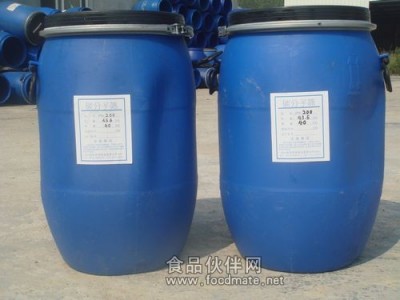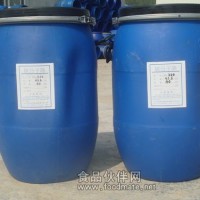Molecular Sieving Carbon (MSC) or Carbon Molecular Sieves (CMS)Molecular Sieving Carbon (MSC) or Carbon Molecular Sieves (CMS) is generally defined as a carbonaceous adsorbent with uniform supermicro pores of smaller than 10 angstrom in pore diameter.
We, Japan EnviroChemicals, Ltd., are a world’s largest manufacturer of Molecular Sieving Carbon in the world. Molecular Sieving Carbon products manufactured by Japan EnviroChemicals, Ltd. are well known as the brand name of “SHIRASAGI MSC.” The production capacity of our Molecular Sieving Carbon is 1,500MT per year.
Our former parent company, TAKEDA put into the world's first commercial production of Molecular Sieving Carbon of 5A in 1969. Since we took over TAKEDA’s technologies, we have been improving the pore size adjustment technique.
Characteristic of Molecular Sieving Carbon (MSC) or Carbon Molecular Sieves (CMS)
As shown in figure 1, the activated carbon generally used for gas and liquid adsorption has well developed micro and transitional pores of 10 to 500 angstrom in pore diameter. On the other hand, Molecular Sieving Carbon has only uniform supermicro pores of smaller than 10 angstrom in pore diameter.
Application of Molecular Sieving Carbon (MSC) or Carbon Molecular Sieves (CMS)Molecular Sieving Carbon is widely used for gas separation. One of the most typical applications is nitrogen PSA (Pressure Swing Adsorption). Nitrogen PSA is classified into the PSA system using velocity separation, which makes use of the difference of adsorption velocity between nitrogen and oxygen. The performance of PSA is largely affected by the property of Molecular Sieving Carbon. It is because the difference of molecular sizes is very small between oxygen compound (0.28nm×0.40nm) and nitrogen compound (0.30nm×0.41nm). The effective difference for the velocity separation can be obtained only when you use Molecular Sieving Carbon which uniform supermicro pores are highly controlled in figure 1. The best Molecular Sieving Carbon is precisely controlled so as to have slightly larger pores than nitrogen compound. This well control results in that the nitrogen compound is harder to adsorb and the oxygen compound is easier to adsorb. Japan EnviroChemicals, Ltd. has high-end technologies and know-how regarding pore controls.
Standard Grades of our Molecular Sieving Carbon (MSC) or Carbon Molecular Sieve (CMS)
SHIRASAGI 3K-172 SHIRASAGI 3R-172 Pellet diameter
1.8mmφ 1.8mmφ Particle size(%)
2.800-1.180mm
99.0% min.2.360-1.000mm
99.0% min.Half cycle time(sec)
60 60 Recovery(%)
37.0 min. 40.5 min. Productivity(Nm3/hr.ton)
180 - 200 205 - 220 產品應用性:
石化業 食品業食品保鮮 電子業 金屬熱處理碳分子篩的原料及製造:
製被碳分子篩的步驟,是選取富含纖維質之植物作為原料,例如胡桃木或是椰子殼;其是是將這些纖維性原物料,放置於窗滿鈍性氣體的環境中,進行碳氫化合物的熱分解;待全面碳化後,再將焦油瀝青或期他黏合劑共同押出成圓柱狀,再送入鈍性氣體中加熱固化,即可得到碳分子篩。
碳分子篩製氮的基本原理:
碳分子篩的微結構是由碳所構成的多孔性骨架、它屬於非即性的吸附劑,可以吸附空氣中的氧分子及氮分子,在動態的操作過成中,碳分子篩對氧分子的吸附大於氮分子,因此當空氣通過一定長度的碳分子吸附床後,大部分的氧分子被吸附留置在吸附床內,只剩氮分子通過吸附床,因此而得高純度的氮氣。
製氮機的運轉步驟:
一般最常見的製氮機是採用變壓希附(PSA)的運轉模式,他是利用碳分子篩在不同壓力下具有不同吸附量的特性,來進行吸附製氮及脫附再生的工作,通常包括下列幾個步驟:
增壓:以壓縮機將空氣增壓,以提供空氣的行進動力,並增加碳分子篩吸附床的吸附容量,一般的壓力約控制在5-7 kg/cm2 過濾:空企進入吸附槽之前,必須先經過過濾器,將空氣中的懸浮顆粒、雜質、細微油霧等除去,以防止此類物質堵塞碳分子吸附床,進影響製氮機的製氮效率。 吸附製氮:將高壓空氣通過吸附床,利用前述的吸附性差異,吸附住大部分的氧氣,而讓部分的氮氣通過排出,進而達成分離空氣中的氧氣越來越多,逐漸接近吸附床的飽和吸附量的時候,就要開始進入減壓脫附的步驟。 減壓脫附;將吸附床洩壓,當壓力降低時,原本吸附在碳分子篩內的氣體分子也開始釋出,再利用低壓的氮氣通過吸附床,置換掉部分的殘留氧分子,完成再生步驟。為了維持連續的氮氣供應,一般的製氮機中都會安裝至少兩套的吸附床,一套供製氮之用,另一套則進行再生,待吸附飽和後,則吸附模組改成再生模式,而已再成完成的模組則改成吸附模式。
日本武田碳分子筛3KT-172






